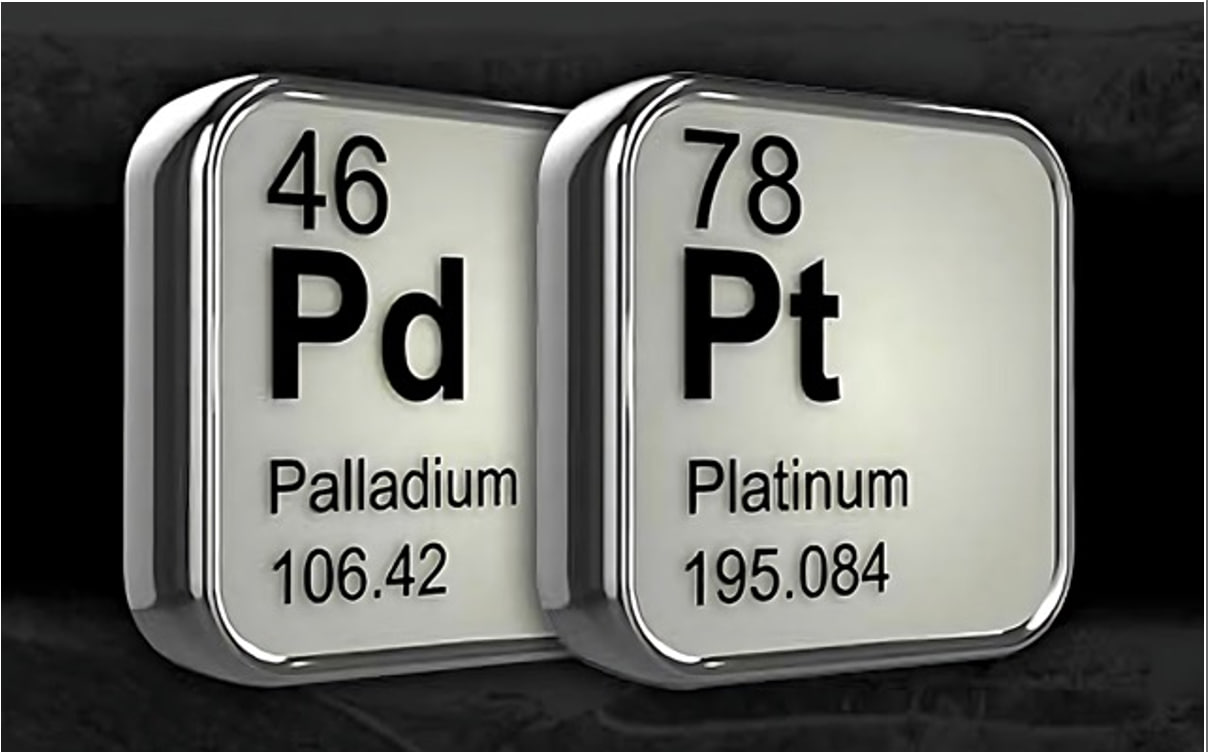
Platinum and palladium are good alternatives to classic silver and gold products.
Silver and gold dominate the precious metal investment market and are likely to continue to do so into the foreseeable future. However, PGMs are increasingly emerging as significant additions to investment portfolios, offering investors attractive opportunities to diversify their existing holdings and gain more complete coverage of the spectrum of precious metals.
Many investors turn to gold as a form of wealth preservation, seeking to capitalise on the commodity’s stability. Meanwhile, silver typically witnesses greater levels of price movement; a volatility which holds greater potential for generating profit. Of the two, PGM investment more closely resembles the trends observed in the silver market, with growing interest in these niche metals largely attributable to their price fluctuations in recent years.
Platinum, palladium and rhodium belong to a set of metals referred to as the Platinum Group Metals (PGMs), together with a trio of lesser-known metals (ruthenium, osmium and iridium). PGMs are typically found as metal alloys, occurring in the same mineral deposits and sharing similar chemical properties. Rarer than both silver and gold, all six of PGMs collectively make up only 0.0005 ppm of the Earth's crust, according to the U.S. Geological Survey. They require complex mining and refining processes.
The concentrated geographical location of PGMs has played a part in their rising prices: South Africa, the dominant producer, holds circa 88% of estimated global resources. Additional resources can be found in Russia, Zimbabwe, Canada and the United States.
Whilst undeniably rare and precious, PGMs also have an important functionality aside from investment; as vehicle autocatalysts, in jewellery as well as for a range of other industrial uses, including chemical, electrical, petroleum, glass and dental work.
Difficult extraction processes and limited concentration of stockpiles combined with ongoing political and labour issues have constrained the supply of PGMs. Simultaneously, demand for PGMs is being propelled by the various industries which make use of them. Under these conditions, the profitability and popularity of PGM investment are gaining traction.
Why Invest in Platinum?
The platinum that has been mined is approximately 30 times rarer than gold. Of all the PGMs, platinum is the most liquid commodity, bolstered by large retail markets and precious metals brokerages. Similar to silver, platinum has price support from both the jewellery and industrial sectors of the economy.
China is the world’s largest market for platinum jewellery accounting for over half of annual demand, whereas India is a key driver of growth, with demand increasing 10-fold in 7 years, partly due to a rising men’s jewellery market.
Although platinum is most familiar for its use in jewellery, it is more often used in the systems that control vehicle emissions and also electronic goods; Platinum is necessary for liquid crystal displays, and platinum increases storage density on hard disks for laptops and servers.
Platinum supports diesel cars which have seen falling demand recently due to emission legislation in several major cities, but a potential key driver for future demand might be Fuel cell electric vehicles (FCEV).
Whilst only circa 3% of platinum purchased is currently held as an investment, demand for platinum bullion has begun to increase significantly in recent years, fuelled by investors seeking to diversify within the metals sector. Platinum prices have rarely fluctuated below those of gold, only doing so on two occasions in a thirty-year period. At present, platinum prices are relatively low with commentators expecting a price increase to correlate with a decrease in supply.
Why invest in Palladium?
Palladium was first isolated in 1803 by William Hyde Wollaston (who also discovered rhodium shortly after), and is circa 15 times rarer than platinum. Palladium remained obscure until the Second World War; growing in stature in the 1940s once the US government had outlawed the platinum trade (due to the strategic need to produce weaponry). Chemical and aesthetic overlaps with platinum saw jewellers gradually substituting palladium until it gained recognition as one of the big five precious metals.
Palladium appears in vehicle emissions equipment, electronics, fuel cell production and dentistry. Of these, the most widespread use is in automobile manufacturing (when the metal is used in catalytic converters for petrol engines), accounting for over 55% of palladium’s demand.
Whilst palladium is still a relative newcomer to the precious metals scene, it has yet to gain a prominent foothold with investors. Indeed, investment in palladium has been driven by its more accessible price point. However, the persistent market deficits of the last six years began to have a significant impact on the price of palladium.
Also noteworthy is the fact that significant surges in the price of palladium have resulted from political factors and labour law in South Africa. With the current HUGE drop in the Palladium price, it is gaining more and more momentum as preferable investment opportunity.
LEGAL DISCLAIMER:
While the author has made every effort to provide accurate data and information in the preparation of this article, neither europabullion.com nor the author assumes any responsibility for errors or for changes that occur after the publication. The information referenced is believed to be reliable, accurate, and appropriate, but is not guaranteed in any way. The strategies and forecasts herein are the author’s sole opinion and could prove to be inaccurate. No company, individual, or entity compensated the author or europabullion.com for mention in this article.
The article contains specific names of companies, strategies, different currencies, shares, government bonds, types, and sizes of precious metals, none of which can be deemed recommendations to the readers. Reading this article does not constitute a fiduciary relationship. Data, company-specific or otherwise, will not be updated on an ongoing basis. After the publication of the resources, the author and europabullion.com will not be responsible for future developments.
A registered financial advisor is always the best source of guidance in making financial decisions. The author is not a registered financial advisor and does not address the individual financial condition of the reader.

